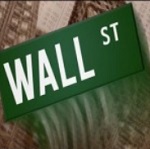By Pam Martens and Russ Martens: September 24, 2019 ~
 Last Friday the Federal Reserve Bank of New York made it clear that its interventions in the overnight repo lending market were going to be a longer-term action. Call it what you will, the Fed has effectively returned to quantitative easing (QE) where it buys up Treasuries, Federal agency debt and agency mortgage-backed securities (MBS) from financial institutions in exchange for loans.
Last Friday the Federal Reserve Bank of New York made it clear that its interventions in the overnight repo lending market were going to be a longer-term action. Call it what you will, the Fed has effectively returned to quantitative easing (QE) where it buys up Treasuries, Federal agency debt and agency mortgage-backed securities (MBS) from financial institutions in exchange for loans.
According to the New York Fed, the program has now been extended to at least October 10 and likely thereafter in one form or another. The Fed will be pumping in $75 billion daily in overnight repo loans while infusing $30 billion in 14-day term loans three times this week for a total of $90 billion in term loans.
The fact that there is one or more financial firms needing $30 billion on a two-week basis and can’t get it from anyone but the Fed isn’t confidence inspiring.
The necessity of Fed interventions is being blamed on temporary forces like a loss of liquidity from corporations paying their taxes for the quarter and large Treasury auctions where primary dealers are forced to buy under contracts with the U.S. Treasury. But as we previously wrote, these explanations do not jive with the gargantuan deposit bases of four of the biggest banks in the world that call the United States home. As we reported last week:
“As of June 30 of this year, the four largest banks on Wall Street (which are allowed to own Federally insured commercial banks as well as stock, bond and derivative gambling casinos known as investment banks) held more than $5.45 trillion in deposits. The breakdown is as follows: JPMorgan Chase holds $1.6 trillion; Bank of America has $1.44 trillion; Wells Fargo has $1.35 trillion; and Citibank is home to just over $1 trillion.
“A number of excuses have been offered by the business press to explain why the New York Fed had to ride to the rescue yesterday but the very simple question is this: how can four banks with $5.45 trillion in deposits not be able to cough up $53 billion in overnight loans.”
The reference to $53 billion is the amount that was borrowed from the Fed during the first day of the intervention, Tuesday, September 17, from the $75 billion offered out by the Fed. Now that the Fed is offering $30 billion in additional two-week loans, the question is this: is one bank tapping the spigot more than others? Is a financial institution in distress? If so, shouldn’t the public know why?
As the Government Accountability Office (GAO) revealed belatedly in 2011 in an audit of the Fed’s loans to Wall Street during the financial crisis, the Fed’s Primary Dealer Credit Facility (PDCF) had secretly made revolving loans totaling $8.95 trillion but 63 percent of that amount went to just three Wall Street firms: Citigroup received $2 trillion; Morgan Stanley got $1.9 trillion; and Merrill Lynch was the privileged recipient of $1.775 trillion. The rationale from the Fed that it made these secret loans to help banks return to lending to businesses to help the economy is bogus. Morgan Stanley and Merrill Lynch were predominantly retail brokerage firms with millions of trading clients. These Fed loans thus looked suspiciously like a bailout of margin loans and trading accounts.
One big bank with a large footprint on Wall Street that has seen its share price evaporate over the past two years is the big German lender, Deutsche Bank. Prior to the financial crisis, this was a $120 stock. Deutsche Bank closed yesterday on the New York Stock Exchange at $7.79, down 2.50 percent on the day. That decline far exceeded the price decline for any other Wall Street bank yesterday.
Deutsche Bank tried to merge with Commerzbank earlier this year but that deal fell through in April. Its new plan is to fire 18,000 workers and create a good bank/bad bank, isolating off unwanted assets that it plans to sell.
Deutsche Bank has reported losses in three of the last four years; as of the close of trading yesterday, it had $16 billion in common equity value versus $49 trillion notional (face amount) in derivatives; and it’s had four different CEOs in four years. And that’s not the worst of it.
The worst of it is that regulators on neither side of the pond have seen fit to rein in the dangerous interconnections that Deutsche Bank has as a major derivatives counterparty with mega banks on Wall Street as well as other European banks. (See After a $354 Billion U.S. Bailout, Germany’s Deutsche Bank Still Has $49 Trillion in Derivatives.)
According to a 2016 report from the International Monetary Fund (IMF), Deutsche Bank is heavily interconnected as a financial counterparty to JPMorgan Chase, Citigroup, Goldman Sachs, Morgan Stanley and Bank of America as well as to big European banks. The IMF wrote that Deutsche Bank posed a greater threat to global financial stability than any other bank as a result of these interconnections. When the IMF made that assessment in 2016, Deutsche Bank had tens of billions of dollars more in market cap than it does today.

